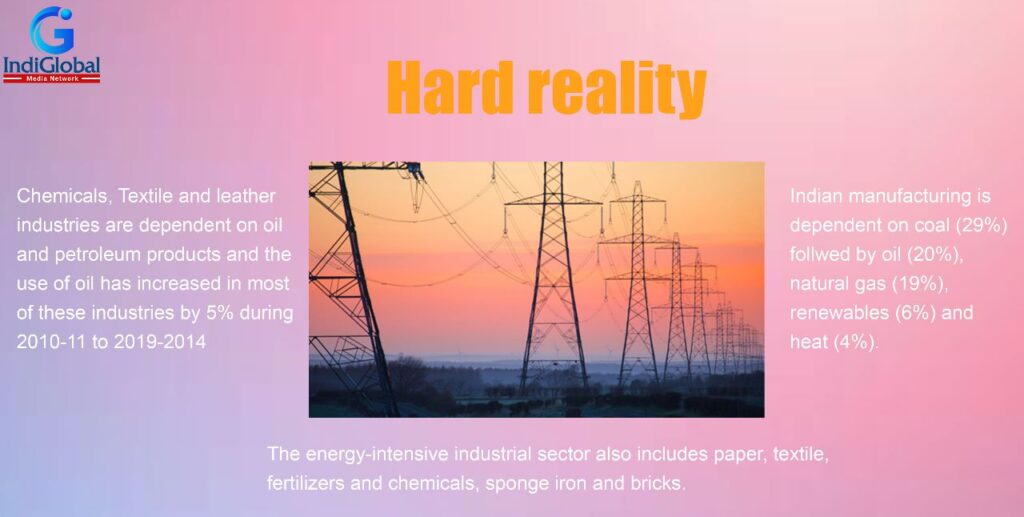
Keeping India’s net zero commitments in mind, the government is planning to shift from the use of petroleum products to electricity across sectors
IndiGlobal Bureau
The Government of India has ambitious plans of becoming the net zero emitter by 2070 and is working towards a long term strategic plan which includes phasing out the use of gas and fossil fuels and move towards green hydrogen. According to the latest data from the International Energy Agency in 2020, Indian manufacturing was dependent on coal (29%), followed by oil (20%), electricity (22%), natural gas (19%), renewables (6%) and heat (4%).
As per statistics at present 76% of the energy demand in MSMEs is met through electricity, followed by oil (11%), and coal (6%). The Power ministry is keen on moving away from the use of petroleum products to electricity across sectors. The electrification of mobility and wider adoption of electric vehicles has seen a good traction and the emergence of close to 400 companies in the electric vehicle space is a testimony to the awareness on the front, now the government wants to give a fillip to green hydrogen.
 As per the long-term plans of the government, the focus is on energy- intensive industries such as iron and steel which have the highest consumption of electricity at 24%, followed by chemical and petrochemical (17%), non-metallic minerals (9%) and other industries (48%). The energy- intensive industrial sector also includes paper, textile, fertilizers and chemicals, sponge iron and bricks.
As per the long-term plans of the government, the focus is on energy- intensive industries such as iron and steel which have the highest consumption of electricity at 24%, followed by chemical and petrochemical (17%), non-metallic minerals (9%) and other industries (48%). The energy- intensive industrial sector also includes paper, textile, fertilizers and chemicals, sponge iron and bricks.
Consumption of electricity by the industry has more than doubled in the past decade—from 2,72,589 GWh in 2010-11 to 5,51,362 GWh in 2019-20.A report by the Bureau of Energy Efficiency (BEE) said iron and steel industry, cement, fertilizers and chemicals, and paper are largely dependent on coal for firing up furnaces. It said that from 2009-10 to 2018- 19, almost all industries except iron and steel have reduced their coal intake by 6-23%, which the report said can be attributed to technological advances, switching to natural gas and electricity, and government initiatives like the Perform, Achieve and Trade (PAT) scheme.
Fertilizers and chemicals, textile and leather industries are dependent on oil and petroleum products and the use of oil has increased in most of these industries by 5% during 2010-11 to 2019-2014, except in fertilizers, which switched from oil to natural gas.







